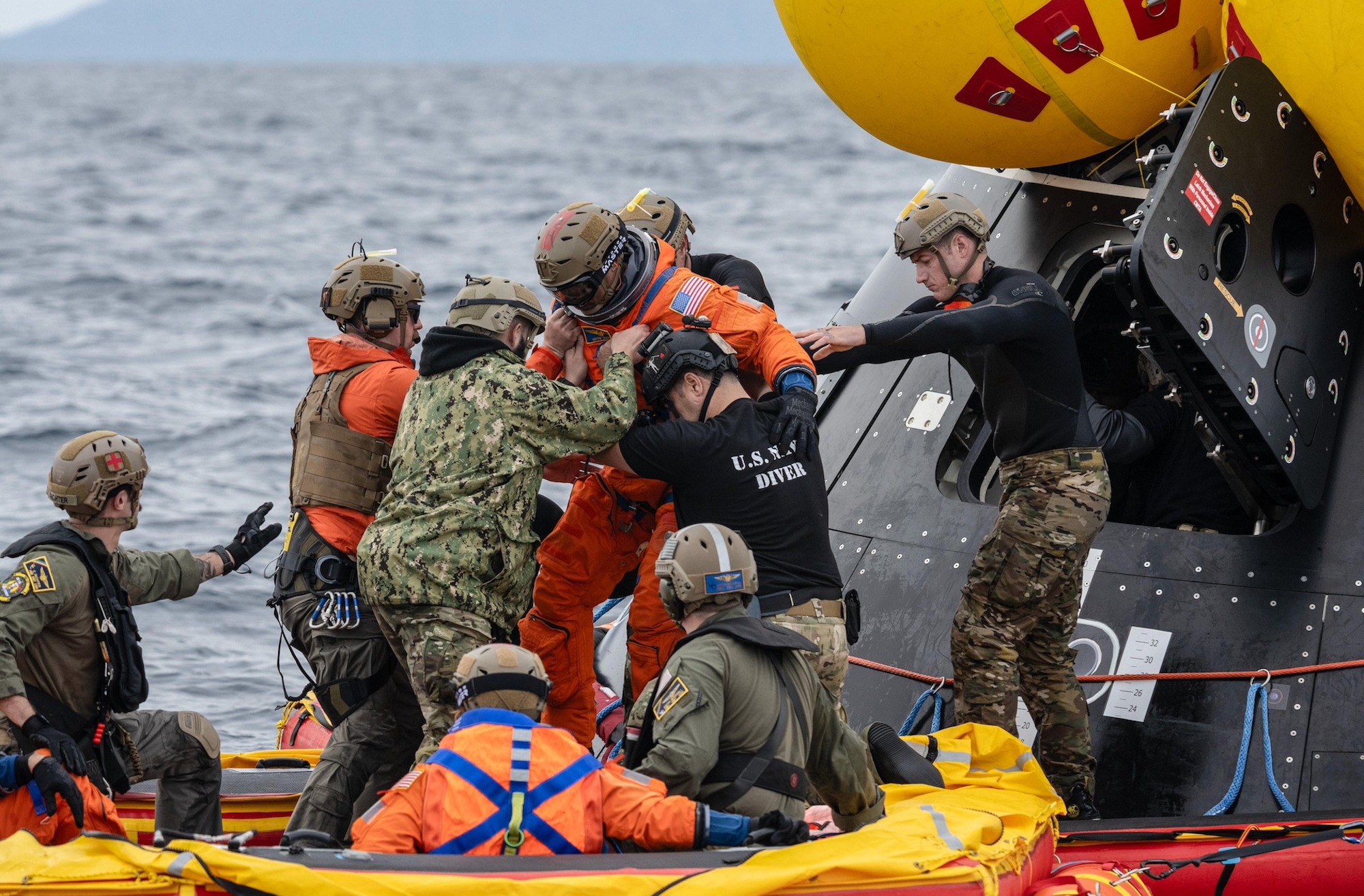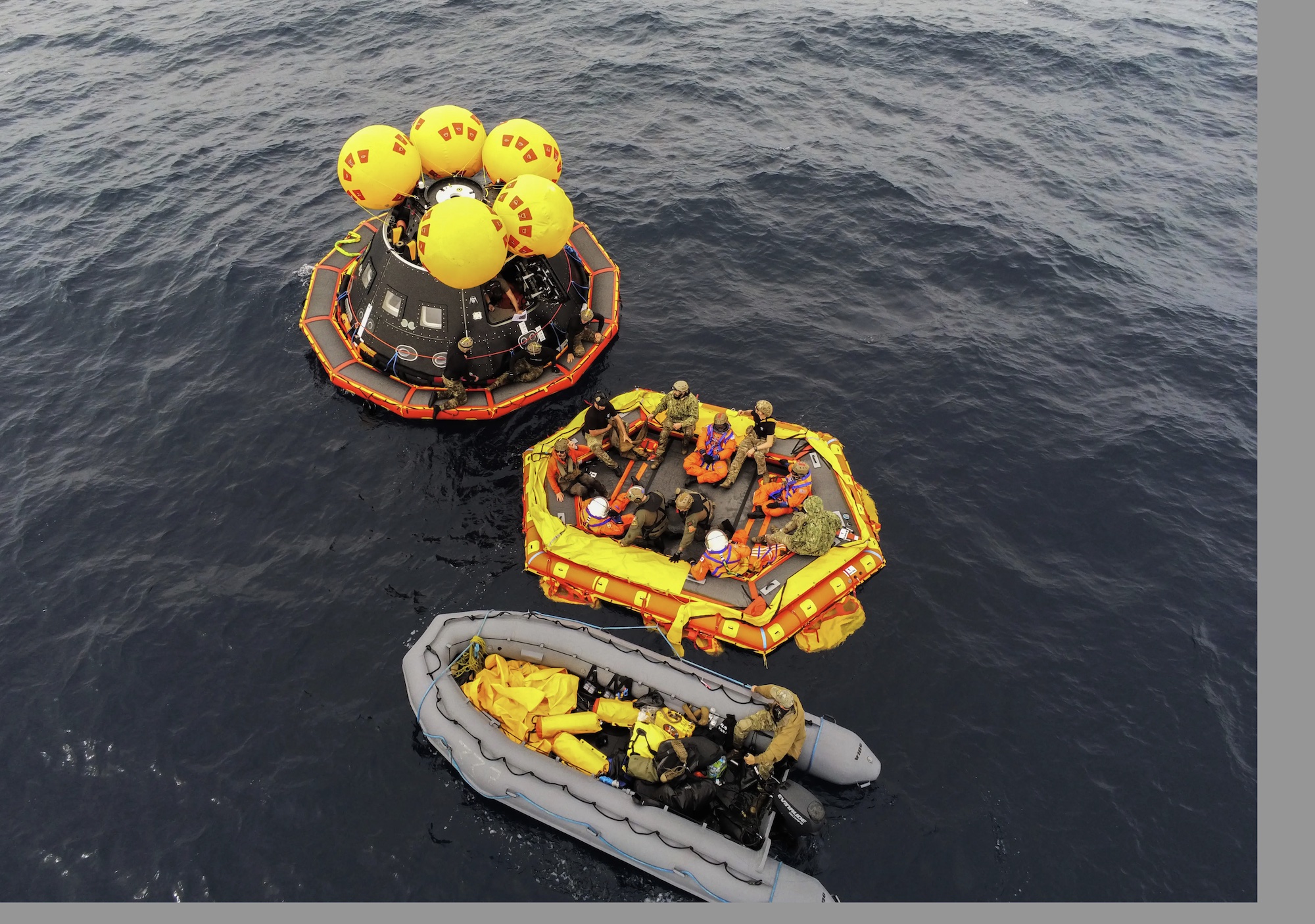NASA’s Artemis II crew received disappointing news in January when their lunar-flyby mission was pushed back at least 10 months to September 2025.
The space agency said the delay was necessary to give Artemis teams “more time to work through the challenges with first-time developments and integration.” While the extra time gives the space agency more time to prepare the necessary hardware, it also gives the Artemis II crew — comprising Christina Koch, Victor Glover, Reid Wiseman, and Jeremy Hansen — additional time to train for their highly anticipated moon mission.
The training included a recent trip to the Pacific Ocean, where the four crewmembers rehearsed what would be the final stage of their 10-day mission: the splashdown.
The rehearsal involved a mockup of the Orion spacecraft to add as much realism to the exercise as possible. However, the boats, ships, and helicopters used in the rehearsal were the real deal.
When the astronauts return from their epic voyage next year and land in the ocean, a joint NASA and Department of Defense team led by NASA’s Exploration Ground Systems Program will be waiting off the coast of California to pluck them from the Orion spacecraft before transporting them to a nearby naval ship.
Just before that, after Orion hits the water, a team of Navy divers in small boats will first assess the environment around the capsule to make sure there are no hazards present. Once cleared for approach, teams will stabilize Orion by installing an inflatable collar to the spacecraft. To safely retrieve the astronauts, the divers also will install an inflatable raft beneath Orion’s side hatch to assist in the safe removal of the astronauts.
Once the crew has exited the capsule, the raft will be moved about 100 yards from Orion so the astronauts can be lifted into a helicopter and transferred to the nearby naval ship. There, the astronauts will be taken to a medical bay for a post-mission evaluation before flying on a helicopter back to shore and then onward to the Johnson Space Center in Houston, Texas.
“Our highly choreographed recovery operations will help ensure the final phase of NASA’s first crewed mission to the moon in more than 50 years ends as a success,” Lili Villareal, NASA’s landing and recovery director, said on NASA’s website.
The Artemis II crew will be powered to orbit by NASA’s new Space Launch System rocket in a launch from the Kennedy Space Center in Florida. The flight will involve coming within about 80 miles of the lunar surface before circling the moon and returning to Earth. A successful mission will pave the way for a crewed moon landing that’s currently set for 2028.





